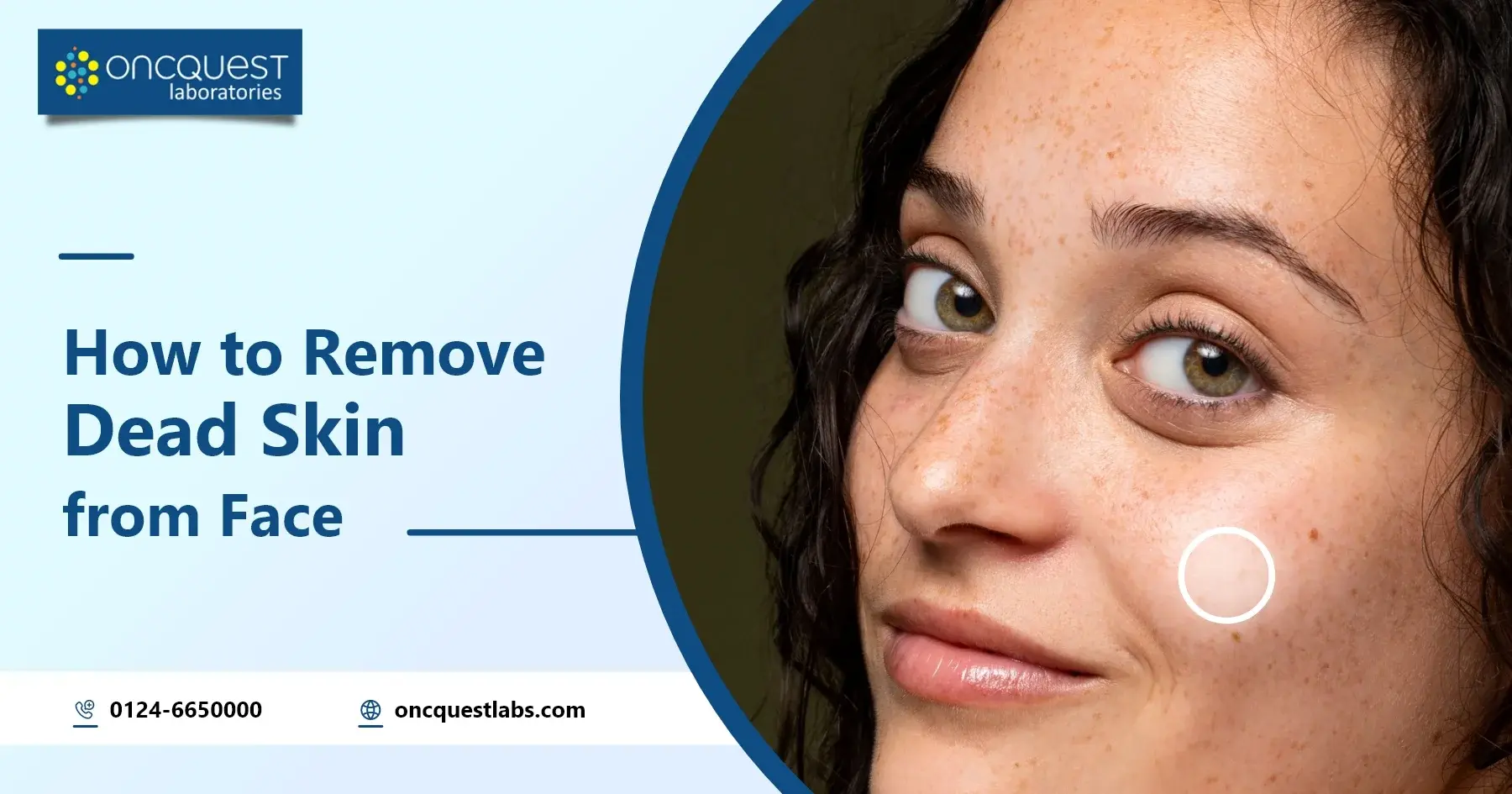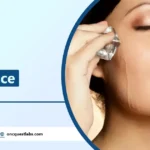The minuscule units that comprise the human body are known as cells. These cells work as independent living organisms that absorb nutrients from our diet and carry out specific biological tasks. Sedentary lifestyles and environmental stressors also have an impact on them. They have a life cycle, after which they become dead skin cells and wither and die. Our bodies contain a large number of skin cells at any given time. However, some of them are in a state of decay and shouldn’t be left on the skin. Now that they have fulfilled their purpose, healthy skin cells need to take their place. Usually, your body gets rid of these dead skin cells on its own and may not require any medical intervention.
However, occasionally these dead skin cells stick to the surface of your skin, clogging the pores and leading to problems with skin care. This mass of contaminants and harmful cells is a byproduct of spontaneous breakdown. It is critical that we rid our bodies of this harmful particulate matter before it begins to interfere with our biological functions. If left untreated, it might have an impact on our skin’s texture and color.
Contents
- 1 More about dead skin cells
- 2 Why is it important to remove dead skin cells?
- 3 How to know whether there is dead skin or not?
- 4 What are the causes of dead skin?
- 5 How to make a face free from dead skin?
- 6 Precautions while exfoliating
- 7 Method to remove dead skin cells at home
- 8 Frequently asked Questions
More about dead skin cells
As you may know, sebaceous glands on our skin secrete natural oils to prevent the skin from drying out. These sebaceous glands both create and shed skin cells. The protein known as keratinocytes is in charge of the formation of epidermal skin cells.
Living skin cells move throughout the body, from the epidermis to the skin’s outermost layer. They eventually expire and are automatically extracted from the skin. This is known as desquamation, and it happens naturally.
Since human skin sheds over 40,000 skin cells every hour, the desquamation cycle typically takes a month to finish. However, problems arise when this number rises and dead skin cells build up on the skin rather than shed.
Why is it important to remove dead skin cells?
An accumulation of dead skin cells can seriously harm your health. It may block your skin’s pores and cause a number of skin care issues. Acne, pimples, dry skin, rough patches, irritation, and inflammation are examples of the latter. Toxins cannot exit the skin through closed pores caused by dead skin.
Additionally, this reduces the efficacy of natural skin care treatments. Therefore, applying body lotion, face cream, face moisturizer, or toner to your skin as part of your body care routine will not adequately nourish it. Thus, skincare professionals recommend that you exfoliate your body on a regular basis to eliminate dead skin cells.
How to know whether there is dead skin or not?
The majority of people may be mistaken when they believe they don’t need to exfoliate. Whether you have mixed, oily, dry, or sensitive skin, you should all periodically exfoliate your dead skin.
Because they believe it takes a lot of time, some people also neglect to exfoliate their skin. However, because the skin has multiple methods to express itself, this does not mean individuals can avoid the repercussions.
- Rough skin: If you have really flaky skin, it could be due to dry skin. It might be brought on by a buildup of dead skin cells or skincare products with added chemicals.
- Dull skin: The accumulation of extra dead skin cells on your body will cause your skin to lose its lustrous radiance.
- Regularly cleaning: It will enable you to get back the glowing skin you’ve always desired.
- Blockage of pores: Have you ever neglected to cleanse your face or skin? Well, it may occur in the winter. Your skin will become clogged with bacteria, pollutants, and dead skin cells if you don’t rinse well. Inflammation and acne could potentially result from this.
What are the causes of dead skin?
A common practice is exfoliating the skin once a day to reveal more youthful skin. However, there may still be an issue if these dead cells build up on the skin. Now let’s look at the factors that lead to the build-up of dead skin cells on the skin.
Not adhering to a healthy cleansing routine: Your skin, like everyone else, needs to be renewed. The skin will become soiled and grow an unnecessary layer of dead skin cells if it isn’t regularly cleansed off. If you wear makeup frequently, you need to remove it with a natural makeup remover. This is because the skin finds it extremely difficult to shed dead skin cells due to oil and makeup residue.
- Growing older: Our skin loses its elasticity and its capacity to hold onto moisture, which results in our skin being thinner and more parched. Additionally, ageing slows down skin cell shedding, which causes a build-up of dead skin cells.
- Unfavorable weather: Residing in arid, dry, or extremely hot climate may result in a greater loss of water. Toxins could accumulate as a result of it clogging dead skin cells.
- Sun damage: Skin cells may sustain damage from prolonged exposure to the sun’s UV radiation. Additionally, this can result in a greater accumulation of dead skin on the face, hands, or feet.
- Using skincare products with added chemicals: Chemical-rich products strip the skin of its natural oils and cause it to become parched.
How to make a face free from dead skin?
Do you want to get rid of those skin cells that are invisible but may be doing more than you think? With the aid of appropriate exfoliation, you can swiftly become free of them. Furthermore, doing this skincare regimen every day would cause your skin to become overly dry. Here are some clever strategies to rid your skin of this threat:
Regularly exfoliating your skin helps to rid your face, body, or feet of allergens. Brown sugar, coffee grounds, olive oil, honey, and Epsom bath salt are good starting ingredients for scrubs. Nonetheless, using certain skincare products with natural elements is advised. These goods might actually function.Nonetheless, using certain skincare products with natural elements is advised. These products might be the most effective ways to remove dead skin from the body. Fruit extracts and mild chemical exfoliants like citric, glycolic, salicylic, or malic acids help break the sticky matrix holding cells together and promote cell shedding. Skin cell turnover rate is increased by mild, secure, and efficient acids like BHAs and AHAs. Along with reducing dead skin cells from deeper layers of your skin, it smooths the texture of your skin. Regular use would aid in lowering acne outbreaks and the scars they leave behind.
Are you wondering how to get rid of the dead skin cells on your face? If you use a toxin-free face cleanse, it’s straightforward and easy. Using natural scrubs like coffee or turmeric can help to tighten your skin, remove dead skin from the top layers of your skin, and gently exfoliate your skin.
Precautions while exfoliating
- Do ascertain your skin type prior to exfoliating it.
- Before incorporating a scrape or acidic product into your skincare routine, make sure to perform a patch test first.
- We suggest that you choose products with natural ingredients and safety labels if you have sensitive skin.
- Steer clear of cleaning your skin too quickly or vigorously as this can lead to microtears and further damage. Since the skin is a delicate area, we suggest moving slowly.
Method to remove dead skin cells at home
Debris from the skin can be easily and should be removed at home. To begin, all you need is some time, perseverance, and toxin-free skincare products. Always choose skincare products that are appropriate for your skin type and texture.
You can have too much dead skin on your body if you have never exfoliated your skin to remove these pollutants. It just implies that it would take you longer than other individuals to achieve cleaner, more radiant skin.
| Step | Description |
| Purification | Use a mild natural face wash to eliminate impurities, dirt, and excess oil, preventing acne and maintaining pH levels. |
| Toning | Use an effective face toner to achieve even-toned skin by deeply penetrating and removing unwanted skin cells for a brightened glow. |
| Exfoliating | Scrub with a natural face scrub weekly to remove dead skin cells, promote healthy skin growth, prevent build-up, and rejuvenate the skin. |
| Applying Face Mask | Use a face mask to replenish skin with essential antioxidants, decongest, and provide nourishment for a radiant look. |
| Mid-Day Massage | Apply a natural face gel for intense hydration, nourishment, and a youthful glow during the day. |
| Moisturizing | Regularly moisturize in the morning and night with SPF-containing vitamin C moisturizer and a dead skin remover cream for soft, hydrated, and unclogged skin pores. |
Frequently asked Questions
Q1: How can I remove dead skin from my face at home?
A1: You can use a soft-bristled brush or a gentle scrub at home to gently exfoliate dead skin off your face. For a more thorough exfoliation, think about utilising chemical exfoliants like beta hydroxy acids (BHAs) or alpha hydroxy acids (AHAs).
Q2: How can I remove dead cells from my face?
A2: Gentle exfoliation techniques, such as face scrubs made with natural exfoliants like sugar or oatmeal, or chemical exfoliants like salicylic acid or glycolic acid, can help you get rid of dead skin cells from your face. For your skin to stay moisturised, make sure you moisturise afterward.
Q3: How do I exfoliate my face?
A3: Use a chemical exfoliator such as an AHA or BHA and massage it in circular motions on your face. For moisturized skin, rinse well and apply a moisturizer afterwards.





